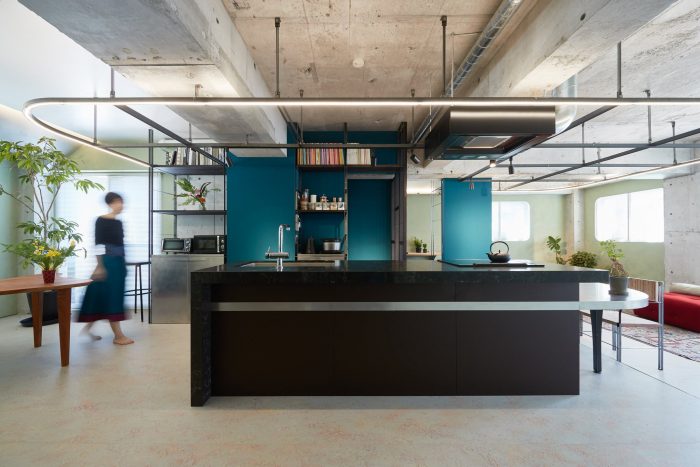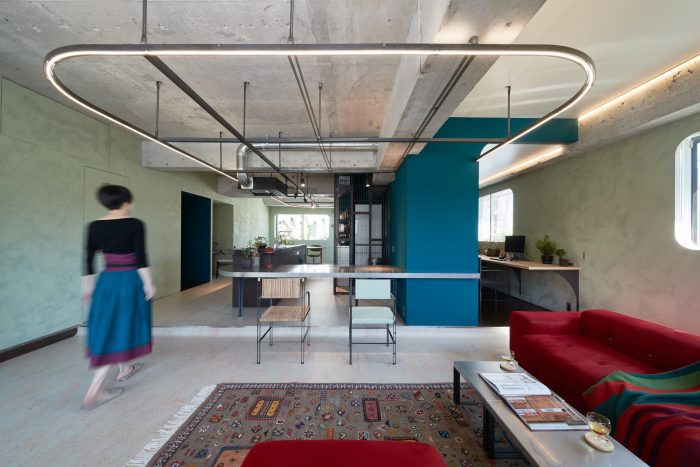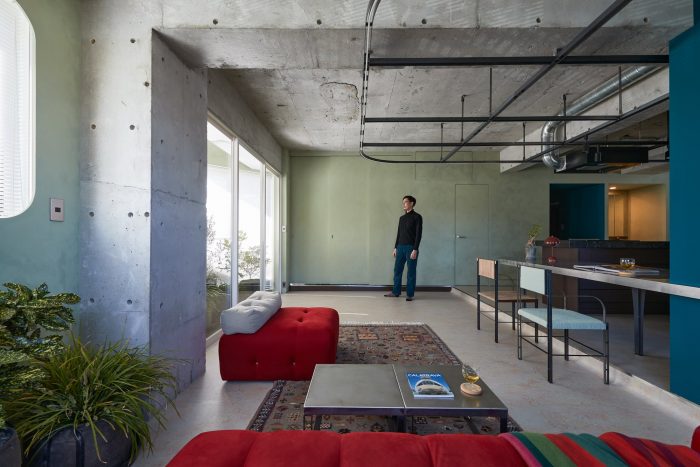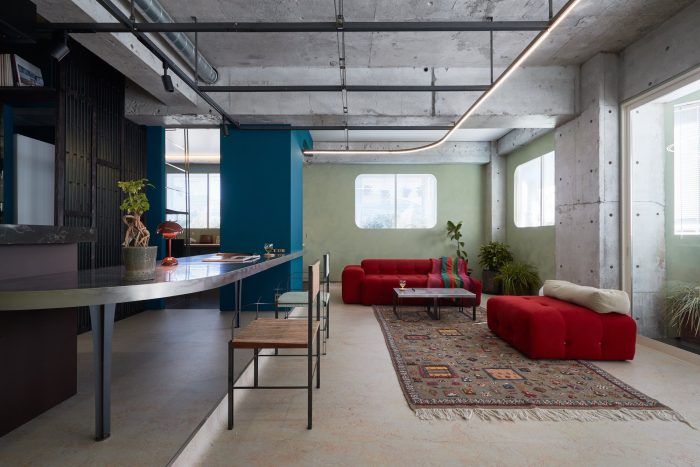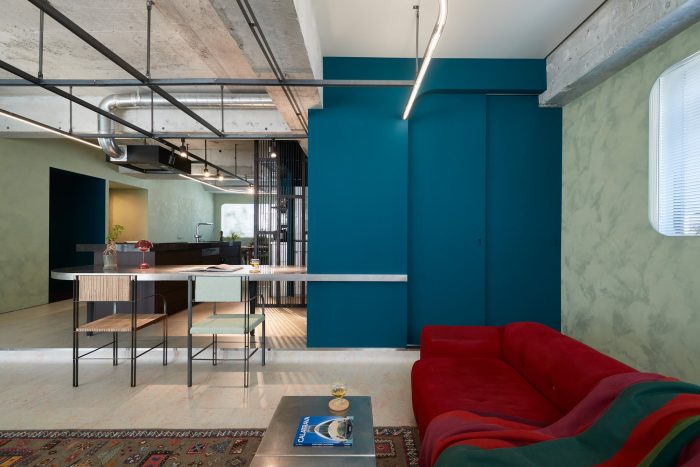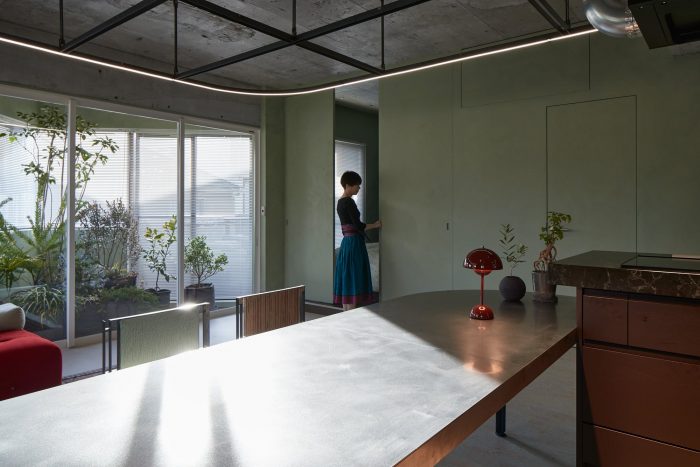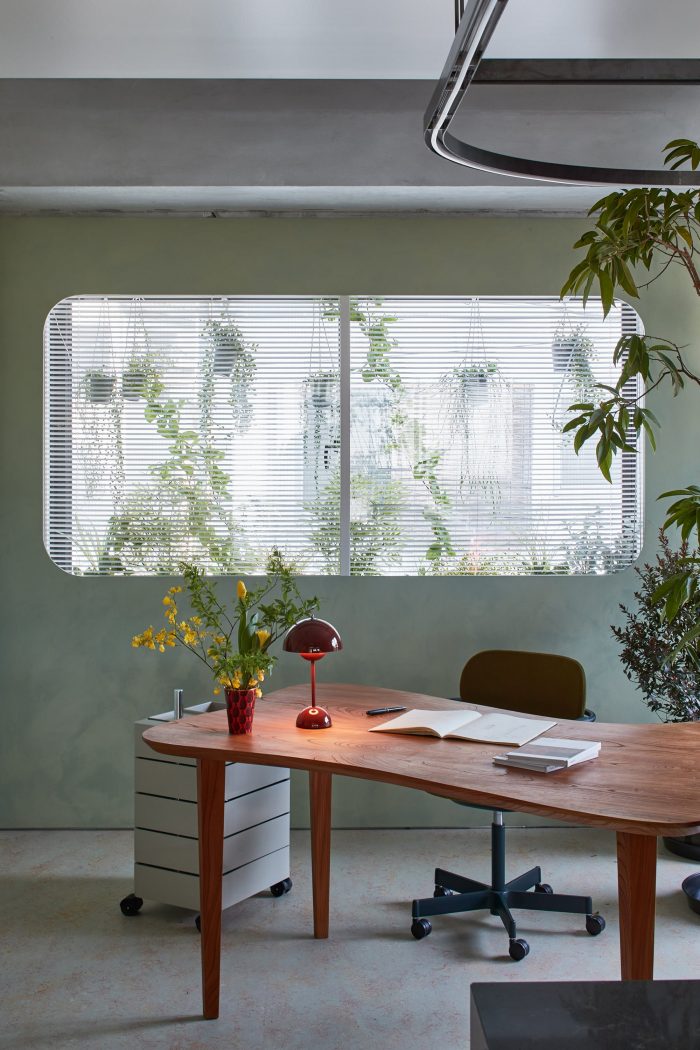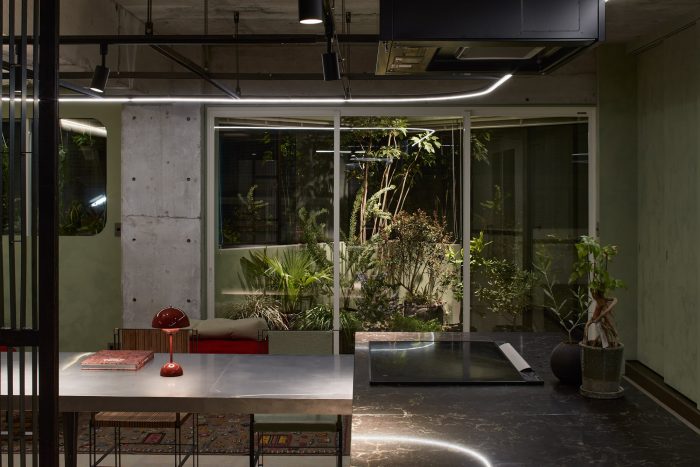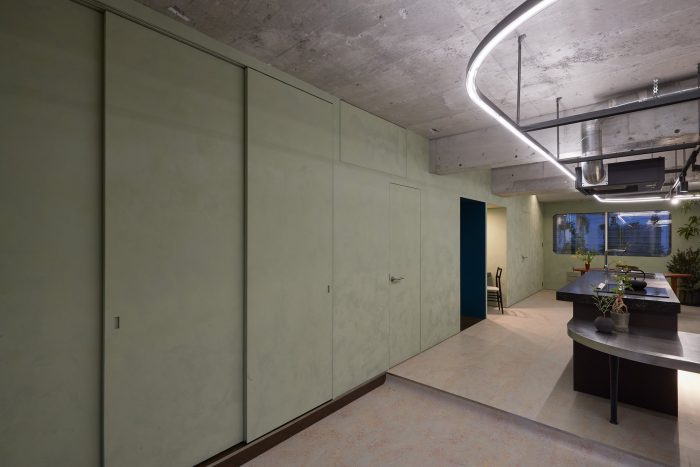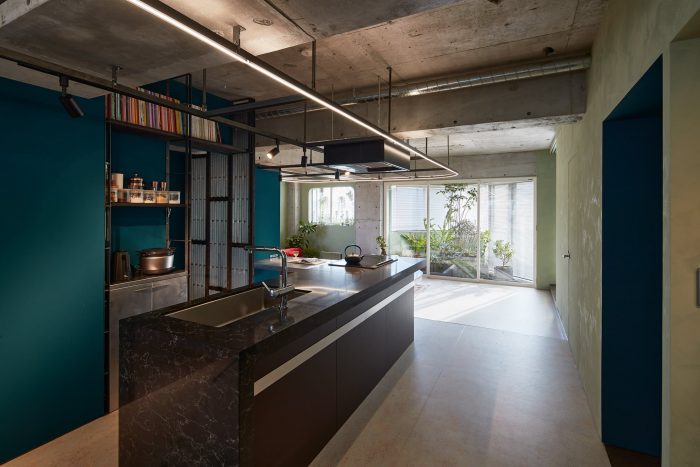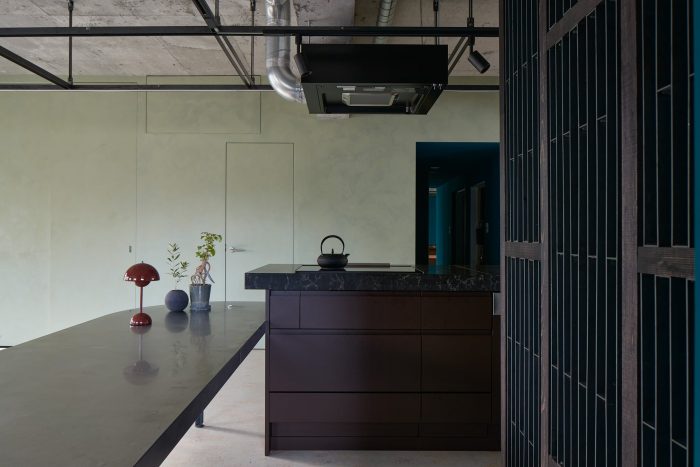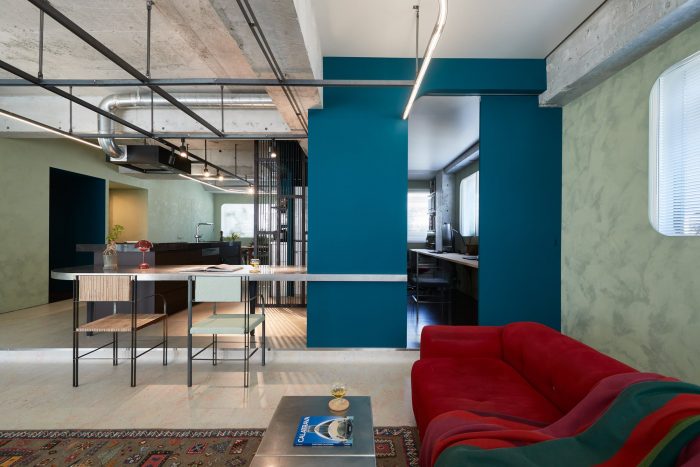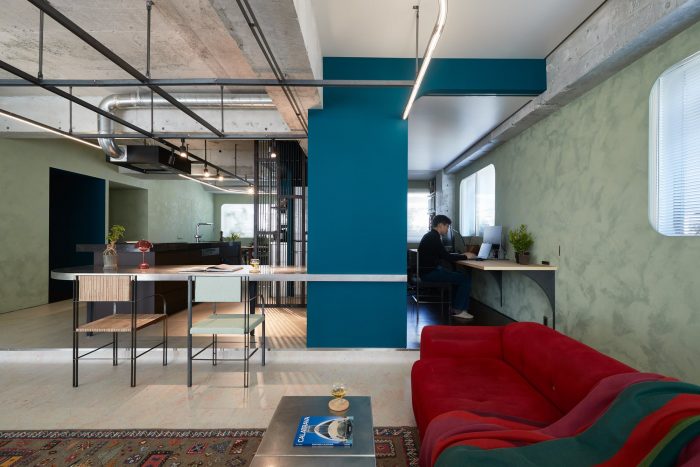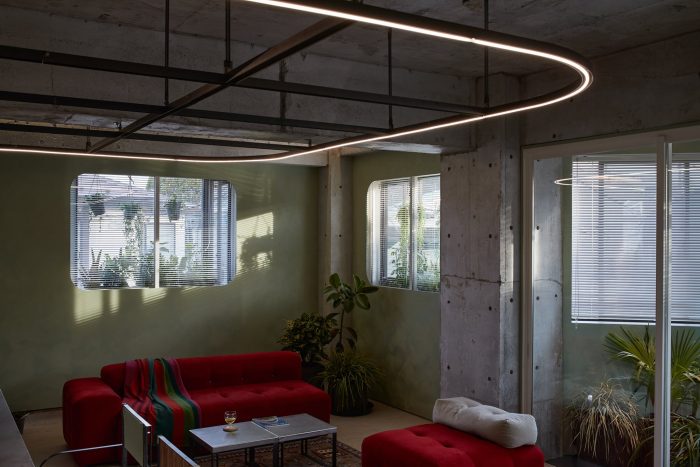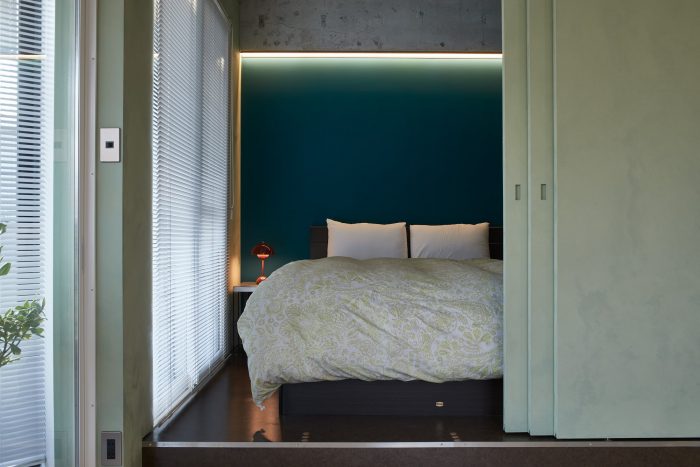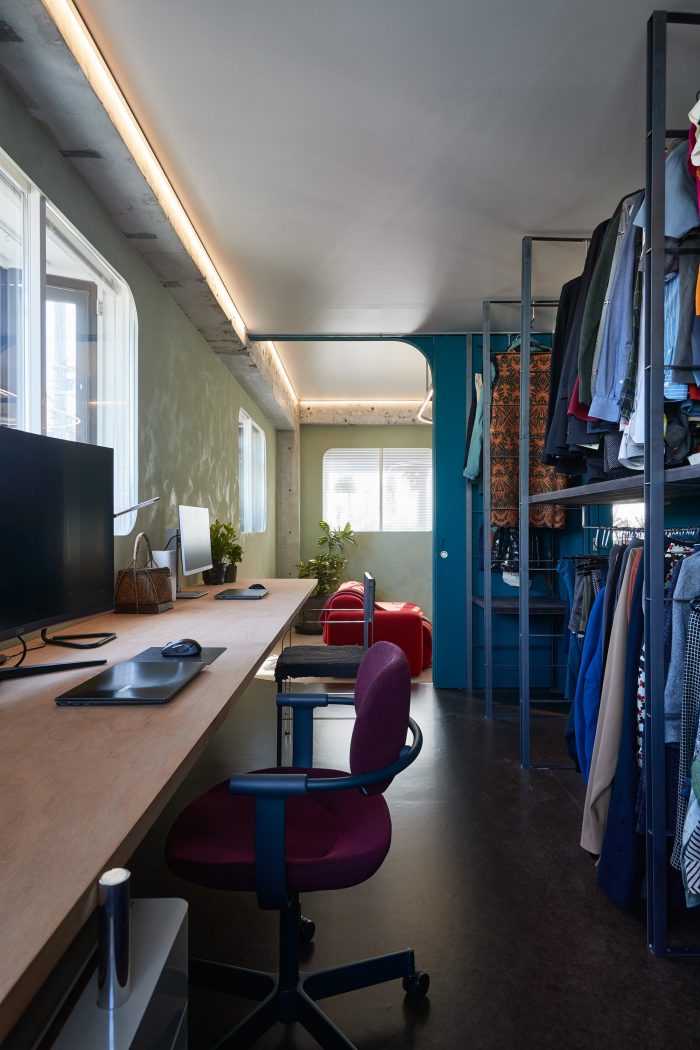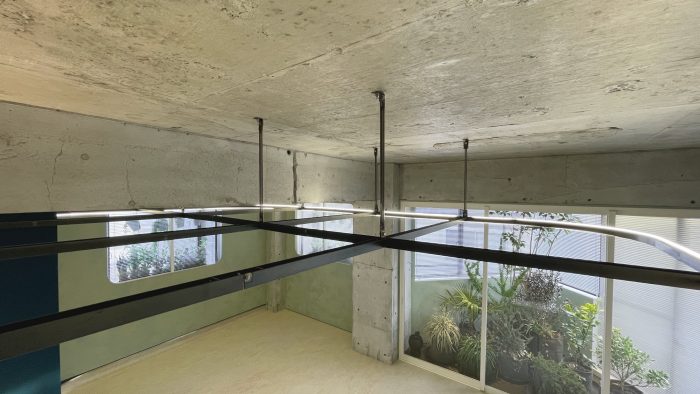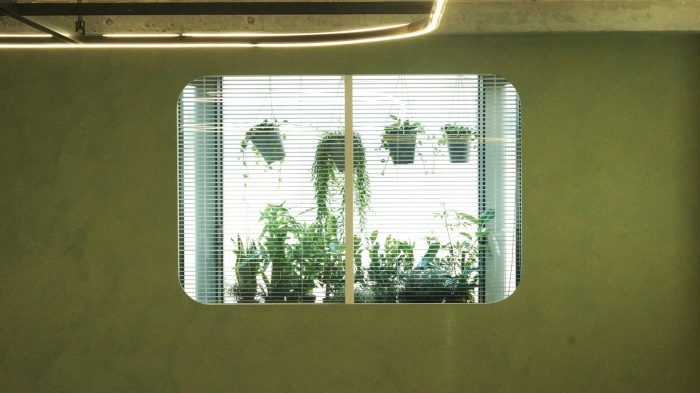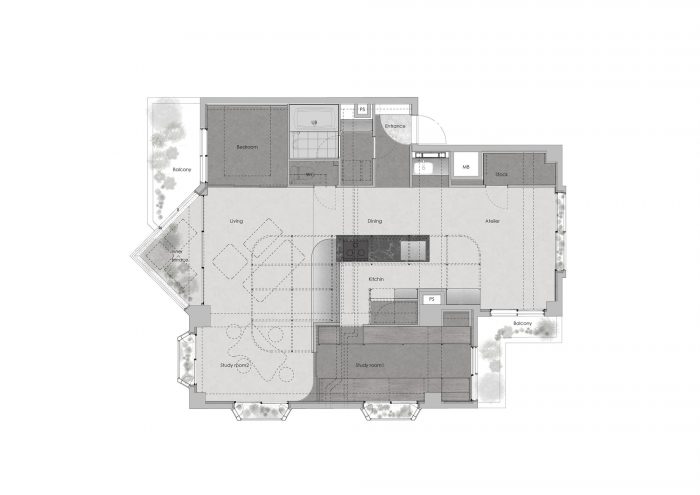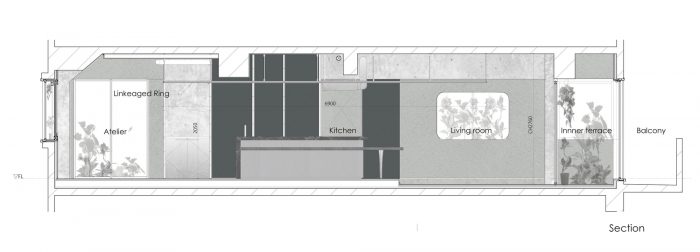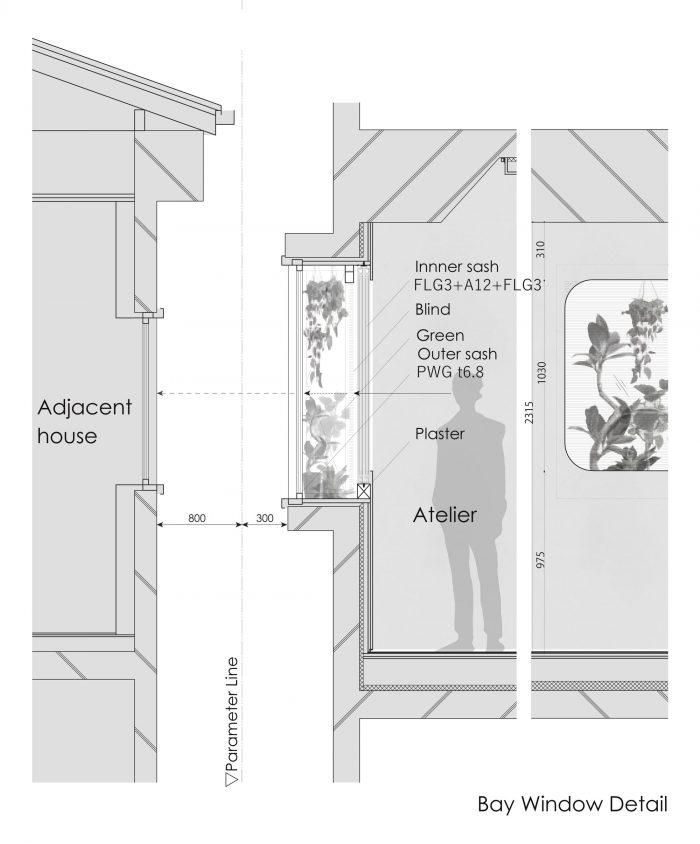这是一个建筑师自己的住宅的改造项目。位于高密度住宅区的公寓楼二楼的90㎡楼层被规划为建筑师多样化活动的基地:住宅、办公室、工作室和陈列室。
This is a renovation project of an architect’s own residence. The 90 ㎡ floors on the second floor of the apartment building in a high-density residential area was planned as a base for the diverse activities of the architect: a residence, an office, a studio, and a showroom.
我们仔细阅读了现有的条件,并着手进行改造计划,尊重 “一个有八个开口的明亮空间 “和 “老化的混凝土的物质性”。为了利用八个开口,经过大量的设计研究,使空气量和视线最大化,我们采用了一个单间,将餐厅和客厅、厨房和工作室合并在一起,可以用推拉门来隔断。此外,为了最大限度地发挥现有混凝土结构的作用,插入了钢制扁条,在材料和结构件之间创造了一种对比关系。
We carefully read the existing conditions and proceeded with the renovation plan, respecting “a bright space with eight openings” and “the materiality of the aged concrete”. In order to utilize the eight openings, after a large number of design studies to maximize air volume and line of sight, a one-room was adopted merging of dining and living room and kitchen and atelier that can be partitioned by sliding doors. Furthermore, to maximize the presence of the existing concrete structure, steel flat bars were inserted to create a contrasting relationship between the materials and structural members.
一个 “连接环 “被规划在计划的中心,作为悬挂在现有天花板上的硬件,穿过厨房、餐厅、客厅和工作室,这些都被安排在一个房间里。它由两根扁平的杆子组成,上面和下面都放置了照明设备。当作为工作室使用时,它可以作为照明指挥棒来利用。该设计将不规则的、强壮的现有框架与穿过FL+2050的钢架的尖锐直线形成对比,综合照明使它们都受到关注。
A ” Linkaged Ring” was planned in the center of the plan as hardware suspended from the existing ceiling, crossing the kitchen, dining room, living room, and studio, which are all arranged in one room. It is composed of two flat bars, with lighting fixtures placed above and below. When used as a studio, it can be utilized as a lighting baton. The design contrasts the irregular and strong existing frame with the sharp straight lines of the steel frame passing through FL+2050, and the integrated lighting brings them both to attention.
居住在东京的高密度住宅区,与邻居的距离是一个极其重要的主题。我们规划了一个 “绿色的背影”,作为环绕一室的背景。利用现有的弓形窗,将植物构成的绿色层放在一起,由内侧的窗扇隔开。窗扇通过从内部覆盖内墙而被隐藏起来,它被设置成一个有圆角的开口。这四层建筑避免了与邻居的直接视线,同时控制了直射光线并提高了保温效果。该建筑被设计成同时具有舒适性和吸引力的空间。我们的想法是创造一个源自中央联动环的周边环境,它可以作为一个单一的围墙持续体验,直到被绿色背面过滤的街区外墙。
The distance from the neighborhood is an extremely important theme when living in the high-density residential area of Tokyo. We planned a “Green Back” as a background surrounding the one-room. Using the existing bow window, the green layer made by plants was put together, partitioned by an inner sash. the sash was hidden by covering the inner wall from the inside, and it was set up as an opening with rounded corners. The four layers avoid the direct line of sight with the neighbors while controlling direct light and improving thermal insulation. The building is designed to be a comfortable and attractive space at the same time. The idea was to create a perimeter that is derived from the central Linkaged Ring, and which can be continuously experienced as a single enclosure up to the exterior walls of the neighborhood filtered by the Green Back.
在创造一个多用途空间的同时,我们试图彻底消除内部的 “住宅性”。装载着现有的和最大化的一室一厅将成为工作和私人生活重叠的多样化活动的容器,并将随着未来夫妇的生活阶段的变化而改变其形状。在生活方式高速多样化的当今世界,建筑师本人和他自己的住宅一起,希望能走在这种实践的前列。
While creating a multi-use space, we attempted to thoroughly eliminate the “residential-ness” of the interior. The one-room, loaded with existing and maximized, will become a vessel for diverse activities overlapping work and private life and will change its shape as the couple’s life stage changes in the future. In today’s world where lifestyles are diversifying at high speed, the architect himself, together with his own residence, hopes to be at the forefront of this practice.
Architects: HAMS and, Studio
Area : 90 m²
Year : 2022
Photographs :Akira Nakamura
Manufacturers : Haymes Paint, Fe+, Forbo, Tajima, Takara Standard, Villey & Boch
Lead Architect : Yota Hokibara
Architect : Tomoyo Hokibara
Metal Furniture : Kozuka MFG
Plants Planning : Greenian
Constructions : ROOVICE
City : Setagaya City
Country : Japan


